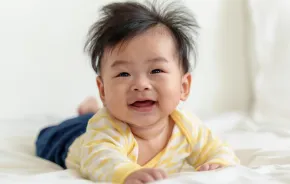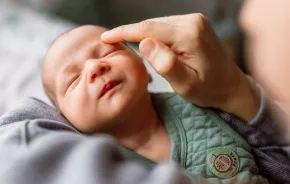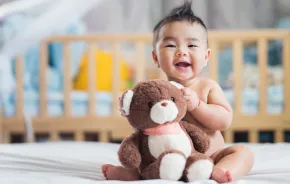Matchbox cars, Polly Pockets, Transformers, Barbies, Bionicles, Legos, stuffed animals -- preschoolers love them, but keeping all those little pieces and parts completely organized can seem impossible. Many parents wonder if there are ways to control the chaos.
No matter how overwhelming the task may seem, all organization projects should start the same way. Jennifer Gordon, co-owner of Organize to Order in Sammamish, advises, "Choose one specific area of the room and sort items into three boxes: garbage, donations and keep."
When the boxes are full, you'll need to find space for the kept items. It is important to choose child-friendly storage. "Remember to purchase items that will store at their height," Gordon says, "and use clear containers with easy-to-open lids."
Tracy Thompson, a Bellevue mother of two, has implemented a successful storage system in her family's playroom. "I'm a fan of everything having its place," she says, "so we have cabinets with drawers that fit the big, clear-plastic crates. We also have a big bookshelf with large cubes. Some cubes have plastic drawers to put things in and the others are filled with books and/or board games."
Having all of those storage options allows the family to keep the toys sorted. "Now there are unique spaces for the cars, Legos, train set, marble track, art supplies, etc.," Thompson says.
Melissa Gerhard, a mother of two from Ravenna, agrees. "I have a different bin or box for everything: cars, art supplies, even board books," she explains. "The kids can easily clean up after themselves, so the toys don't get too jumbled together. It's been a sanity-saver for me, because they've gotten used to the fact that every thing has its place."
Gordon believes that the key to staying organized is to make it easy for children to put their things away. "Don't micro-organize children's toys," she cautions. "For example, put the Barbie dolls, clothes, shoes and accessories in one box that is large enough to store it all together. Label the boxes with a written name on the box, a photo or a cut-out picture of the items that should be put in the box."
Some children, however, may actually prefer to have smaller categories. Laura Leist, president and founder of Eliminate Chaos in Mill Creek, has some specific suggestions for organizing dolls like Barbie, Bratz and Polly Pockets and all of their tiny accessories. "Use a plastic tool box with small divided sections on top. Dolls can go in the bottom area and accessories can be stored in the compartments," she says, "or use a multiple-drawer organizer, designed for nails and screws, for small accessories and a shoe organizer for larger dolls."
Leist also offers a solution for one of the most common problems, storing building block systems: "Box4Blocks building block organizers ($32 each at onlineorganizing.com) work great for Legos." She also recommends using a multiple-drawer organizer with pictures on the drawer fronts, or zipped freezer bags with building bricks, instructions and a picture inside.
Zipped freezer bags work great for puzzles, too. "Cut the photo off of the box and place it in a bag with the puzzle pieces," Gordon suggests. "The child will be able to identify which puzzle it is and can easily access it."
Another frequent cause of disorganization in a child's room is too many stuffed animals, and donation is a good option. "Remember, many of those stuffed animals do not have sentimental value to the child and there are many charities that will take nice, clean, stuffed animals to aid in comfort of less fortunate children," Gordon says. "When children are aware that they can help another child, they are often happy to donate and take pride in doing so."
Be sure to let your child choose which animals to give away and which ones to keep. There are many options for storing and displaying your child's favorite stuffed animals, including shelves, toy boxes, cubes, baskets, bags, nets and chains with clips.
For every organization project, Gordon recommends enlisting your child's help every step of the way. "First, get them involved in the three-step process -- toys that you may think are giveaways may not be to your child, and those that you want to keep may not be interesting to your child," she warns. "Then, let your child help you label their containers," she adds, "so that they can recognize what is in them."
"Children respond to an organized environment where there is a designated place for everything," Gordon says. "When your child is involved in the organizing process, it gives them a sense of pride in their belongings and the order in which they keep them."
Laurie Thompson is a freelance writer and chronically disorganized mother of two from Bellevue.
Resources:
- Jennifer Gordon, Organize to Order, 877-BUSY-YOU
- Laura Leist, Eliminate Chaos, 425-670-2551
- containerstore.com
- ikea.com
- onlineorganizing.com
- organize-everything.com
- shopgetorganized.com
Originally published in the March, 2006 print edition of ParentMap.









